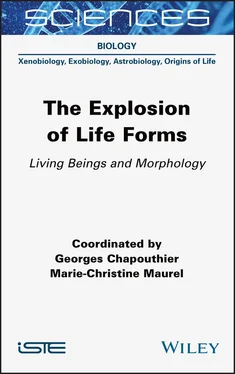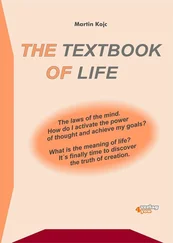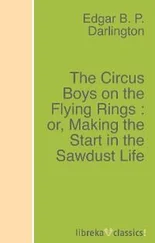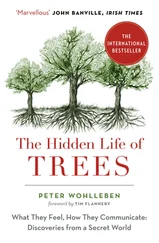Apart from any fair dealing for the purposes of research or private study, or criticism or review, as permitted under the Copyright, Designs and Patents Act 1988, this publication may only be reproduced, stored or transmitted, in any form or by any means, with the prior permission in writing of the publishers, or in the case of reprographic reproduction in accordance with the terms and licenses issued by the CLA. Enquiries concerning reproduction outside these terms should be sent to the publishers at the undermentioned address:
ISTE Ltd
27-37 St George’s Road
London SW19 4EU
UK
www.iste.co.uk
John Wiley & Sons, Inc.
111 River Street
Hoboken, NJ 07030
USA
www.wiley.com
© ISTE Ltd 2020
The rights of Georges Chapouthier and Marie-Christine Maurel to be identified as the authors of this work have been asserted by them in accordance with the Copyright, Designs and Patents Act 1988.
Library of Congress Control Number: 2020937596
British Library Cataloguing-in-Publication Data
A CIP record for this book is available from the British Library ISBN 978-1-78945-005-7
ERC code:
LS8 Ecology, Evolution and Environmental Biology
LS8_6 Phylogenetics, systematics, comparative biology
LS8_7 Macroevolution, paleobiology
Georges CHAPOUTHIER1 and Marie-Christine MAUREL2
1 ICM-CNRS, Paris, France
2 ISYEB-CNRS-MNHN, Sorbonne University, Paris, France
One of the essential characteristics of living beings, perhaps the most important, is an explosion of their forms, linked to the extreme diversity of environments to which they have been able to adapt. It is precisely the multiplicity of these astonishing morphologies, in all its facets, that this book aims to explore.
Of course, this diversity is rooted in the very origin of life itself, as Marie-Christine Maurel relates. The diversity of physical and chemical conditions on Earth during the Hadean period, as well as the diversity of planets and the multiple bodies of the solar system, may have led to the formation of molecules, organizations and protocells with a wide variety of shapes and metabolisms. The different chemical elements of the primitive ocean and fossil traces from the first stromatolites could provide evidence of this. Thus, biodiversity is original and current research is discovering multiple ways of “existing”, far from a standardized vision of life.
These considerations lead, of course, to the great founding question: what is life? This is what Andreas Losch tries to answer. If it is clear that, in the final analysis, living matter can be summed up as creations of physics and chemistry, and if it is true that there is no such thing as a mysterious “vital principle”, would life not then find its specificity precisely in the very explosion of its forms? But then a question of language arises. What we call “life” in everyday language, what we have an existential experience of, is not necessarily what life is at the scientific level, where material bases matter more than forms. As with other complex concepts, “life” is in fact an ill-defined combination of properties that mineral substances do not possess, where form plays a key role, and “words to describe it” are still missing. Indeed, how will “robots” and other machines describe it in a few decades?
In living beings that are already constituted, form becomes, as Jean-Pierre Gasc shows, a means of knowledge. From Aristotle to Cuvier, function is interpreted in relation to morphology. Nowadays, more emphasis is placed on the weight of the physical framework, which suggests that form is an adaptation to environmental constraints, as evidenced for example by the symmetry of bilaterians, the appearance of even appendages (allowing “‘appendicular’ movement on land”) or the “cephalization” of mobile animals. In the second chapter, Jean-Pierre Gasc recalls the central role of the theses of the Scottish zoologist D’Arcy Wenworth Thompson, in his famous book On Growth and Form , which holds “an almost legendary place in scientific literature” and which makes him, in a way, the prophet of the link between form and functional adaptation.
We know today that, while genes define the major parameters of the form of living beings, the essential part, the definitive shape, is constituted by the almighty processes of epigenesis. Jonathan B. Weitzman leads us along these astonishing embryological paths which, going beyond the genetic basis, lead, in successive stages, to the generation of form in the developing embryo. Today, much is known about the epigenetic mechanisms by which environmental signals and genetic characteristics are integrated and contribute to the formation of beautiful forms, underlying the epigenetic landscape so dear to Waddington’s heart.
The very original world of protists and bacteria is presented to us by Guillermo Paz-y-Miño-C and Avelina Espinosa. The numerous strategies by which these beings detect and communicate with each other to survive and develop offer striking examples of the explosion of forms at the microscopic level. These processes also provide a better understanding of the evolutionary strategies involved in the transformation of forms, such as inclusive selective value, whose adaptive success is due to direct descendants but also to kin selection.
Florian Jabbour and Guilhem Mansion tackle the fascinating field of plant forms. “The myriad of plant forms has always been – and still is – a source of astonishment, contemplation and even inspiration to which man cannot remain oblivious”. However, the authors show that this diversity, which could be described as ‘anthropocentric', is not the same one perceived by other representatives of the animal kingdom, such as pollinating insects, “often sensitive to signals that can only be observed in ultraviolet light”. The authors analyze how plant forms emerge, both in terms of individual development (ontogenesis) and lineage evolution (phylogenesis), and how these evolutions allow plants to adapt to the surrounding environment and the constraints it imposes, as well as the possible constraints of internal operation. Lastly, the authors devote a large part of their chapter to all the ways in which human societies have used these plant forms for their own benefit.
Forms are not only manifested in the architecture of living beings, but also, particularly in animals, in their performances and achievements. Robert Jaffard addresses one of the most central performances of the psyche: memory. He analyzes the different forms of memory that allow an individual to adapt its behavior to the constraints and changes in its environment. Ranging from the simple phenomenon of habituation present in invertebrates to the highly sophisticated ability to form memories, these different forms of memory are juxtaposed as the nervous system becomes more complex.
Another area that contributes, in an essential way, to the performance of animals is that of sensory universes, of which Dalila Bovet offers us a detailed overview. Chemical sensitivities such as taste or smell, mechanical sensitivities such as touch or hearing, electromagnetic sensitivities such as vision, but also electrical, magnetic or thermal sensitivities; here are some of the innumerable sensory forms that have enabled animals to develop such particularly complex behaviors.
Beyond living beings, robots are built by human beings on basics inspired by living forms. In particular, they possess very interesting social and emotional forms, which Laurence Devillers explains. She shows that, although these forms are simulated, we “anthropomorphize” the behavior of machines. We imagine living things in artificial forms. She therefore explains the need to talk about ethics and transparency in the design of these machines that non-experts are far from understanding, and who could easily manipulate us.
Читать дальше












